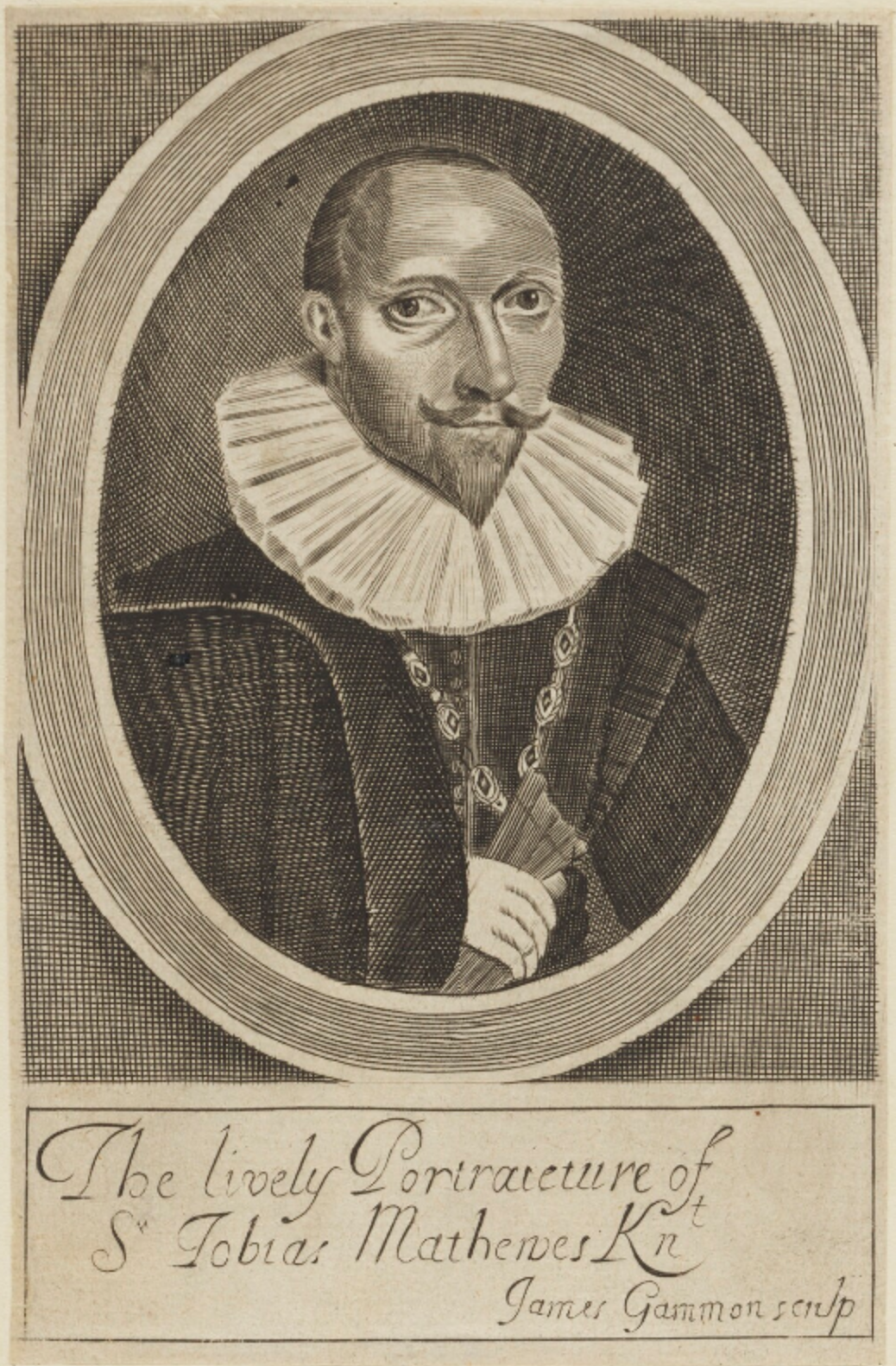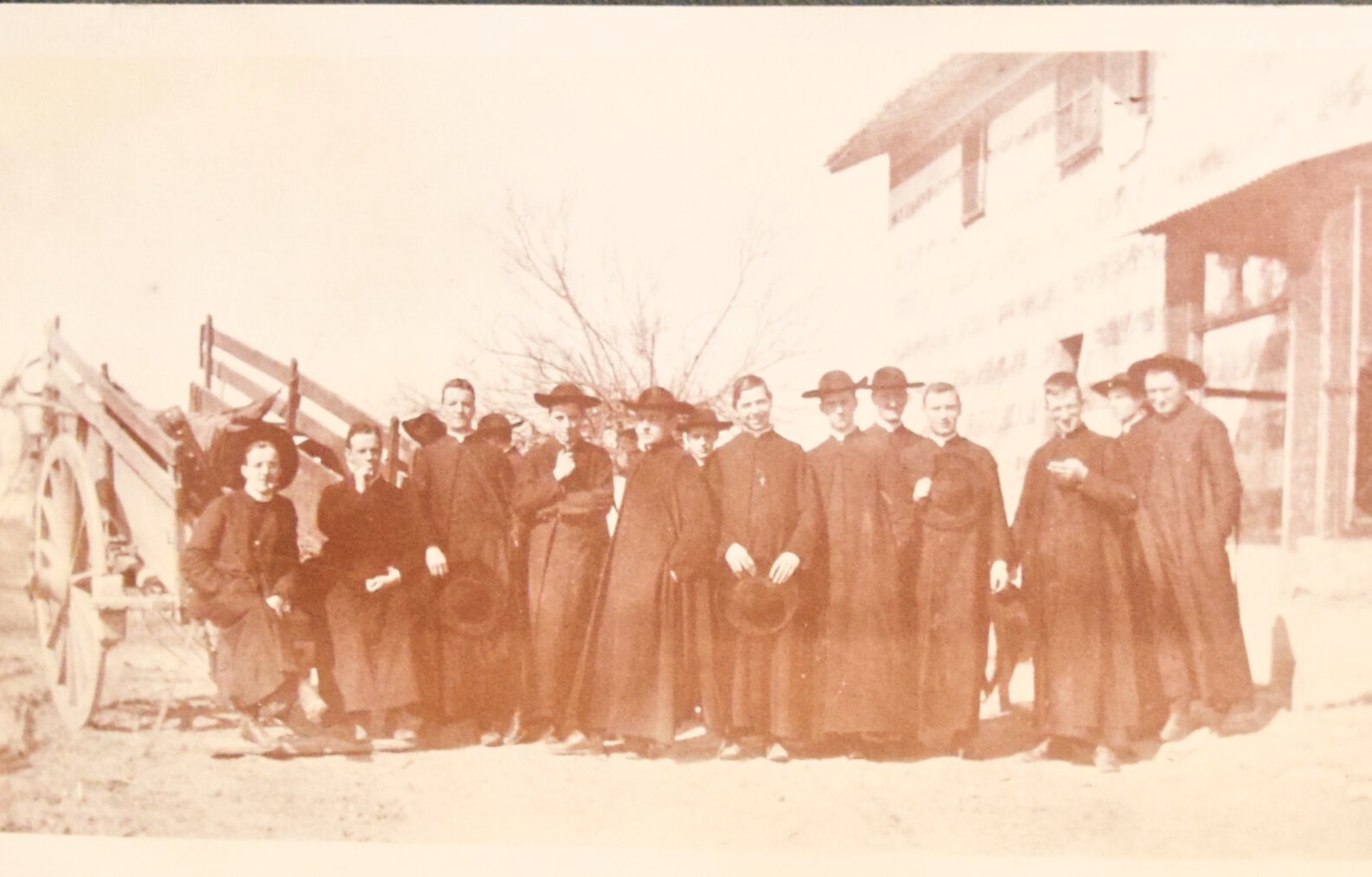‘To dispel the cobwebs from their brain’: College Days at Magliana
La Magliana means little to modern students of the Venerable English College, beyond a sign that is passed on the drive from Fiumicino airport. However, a student of the 1890s looking back in later life wrote: ‘it is hard to realise that one could so explode with enthusiasm, as one often did to the strains of its musical name.’[1]
La Magliana was a farm and vineyard situated about seven miles out of Rome on the right bank of the Tiber. The property came into the College’s possession thanks to a generous bequest made to the Jesuits by Sir Tobie Mathew (1577–1655), one of the most remarkable English Catholic figures of the early seventeenth century.
The Reverend Sir Tobie Matthew (1577–1655)
The son of an archbishop of York, a member of parliament and familiar figure at court, he caused scandal by converting to Catholicism in 1606, following a tour of the continent. Eight years later he was ordained a priest in Rome by St Robert Bellarmine (1542–1621) and did much to support the English Catholic community.
The account books of La Magliana, kept in the College Archives, date back to 1616 and show that the produce of the vines and the farms raised much-needed revenue for the College, although there was a decline in the mid-eighteenth century. It seems not to have been until the nineteenth century that students regularly went to the property on their day off – in the words of George Crompton Ambrose Burton (1852–1931):
…to dispel
The cobwebs from their brain,
And break their studies’ strain. [2]
The house’s appearance was somewhat underwhelming, consisting of ‘a square, squat, inelegant looking, two storey building, covered with discoloured stucco, roofed with Roman tiles above ponderous gutters, which seemed ever ready to crash down upon the unsuspecting.’[3]
The Venerable English College villa house and farm at La Magliana, 1913
Looking back as bishop of Clifton, Burton eulogised:
Thick were its walls against the summer heat;
A shrine there was, with its Madonna too;
A well that ran the livelong summer through;
A barn, for slumber meet, Post-prandial retreat,
And all around the vines in goodly order grew. [4]
While students today can use their free time largely as they please, it previously had a strongly communal dimension and excursions had to be voted on. Not everyone favoured the long walk to La Magliana, although there was always a group of staunch ‘Maglianaites’, including William Giles (1830–1913), Rector from 1888; if voted on, if it was possible to go once a fortnight, though in practice it was a less frequent destination.
On a Magliana day, remembered John O’Connor (1870–1952), a priest of the diocese of Leeds, ‘we set forth between nine and ten, dividing as taste inclined, to right or left of Pamphilj. Left was popular, but right brought us out on the Campagna and past the forts, adding a mile to the distance.’[5] Sometimes a visit was made en route to the Catacombs of San Callisto, where Mass was offered below ground, followed by a breakfast of bread and cheese, washed down by chocolate. Students reached the house not only tired but dirty: ‘I can hardly recall a Magliana day, no matter how fair the sky above,’ wrote James McNally (1889–1960), a priest of the diocese of Shrewsbury, ‘when one had not to wade through mud and more mud to reach this Paradise of Pleasure.’[6]
On arrival, there was dinner to look forward to, but not before a ‘local’ tradition:
before dinner we lit two candles in the tiny chapel (holding about six or eight persons with care), and sang the Litany of Our Lady for the Conversion of England, as we had no books of the regular Wiseman prayers. The tune was traditional, sacred to Magliana.[7]
There was also a small external shrine on the wall of the ancient farmhouse where, in good weather, prayers were said.
Students at prayer at the shrine at La Magliana, 1913
Food was an obvious attraction, as John O’Connor remembered:
Abacchi [lamb] hash, flavoured with rosemary, and usually very well cooked. Then pie of plum or apple, pastry designed by Michelangelo, and with the peperino cheese an entire salad in a great wash-bowl, covered deep in the richest and darkest mayonnaise I have ever seen or heard of. Worth writing home about. Wine ad libitum and quantum suff., and very good because from a fresh barrel.[8]
After dinner at La Magliana, 1913
As well as enjoying the cuisine, students would typically read in the garden, explore the countryside or even make an expedition to the former papal hunting lodge nearby, which had been rebuilt by Innocent VIII (1432–1492) and Julius II (1443–1513), and used by Leo X (1475–1521) for literary, musical and theatrical pursuits. With the building of the railway linking Rome to Civitavecchia in the 1850s, which involved the sale of some of the College lands, there was perhaps the additional attraction of trainspotting.
Notice of the compulsory purchase of land to build the Rome-Civitavecchia Railway, including arable land belonging to the Venerable English College property at Monte delle Piche, near La Magliana, 5 October 1857
La Magliana continued to sell its produce. In January 1872 the College employee who looked after the vineyard was taking a cart of vegetables to Rome, with two companions, when they were stopped by brigands: tragically, ‘one of the three assailants drew out a pistol and fired at the vineyard-keeper, who fell dead in the cart, the ball having passed through his head.’[9]
Questions were posed by the turn of the twentieth century about whether La Magliana was financially viable or even a healthy place for students to visit. With the arrival of Arthur Hinsley (1865–1943) as Rector in 1917, the property was sold; it was perhaps just as well since the area subsequently saw much development and its sale, along with that of the villa at Monte Porzio, allowed for the purchase of Palazzola. Nevertheless, the old vineyard was remembered fondly by many staff and students, who found much-needed refreshment there. ‘Magliana days were an asset,’ wrote one student, ‘whether the place itself was or not.’[10]
————————————————————————————
[1] The Venerabile, 7 (1936), p. 310
[2] The Venerabile, 1 (1923), p. 134
[3] The Venerabile, 7 (1936), p. 311
[4] The Venerabile, 1 (1923), p. 134
[5] The Venerabile, 7 (1936), p. 308
[6] The Venerabile, 7 (1936), pp. 312–313
[7] The Venerabile, 7 (1936), p. 309
[8] The Venerabile, 7 (1936), p. 309
[9] The Tablet, 27 January 1872, p.109
[10] The Venerabile, 7 (1936), p. 310





